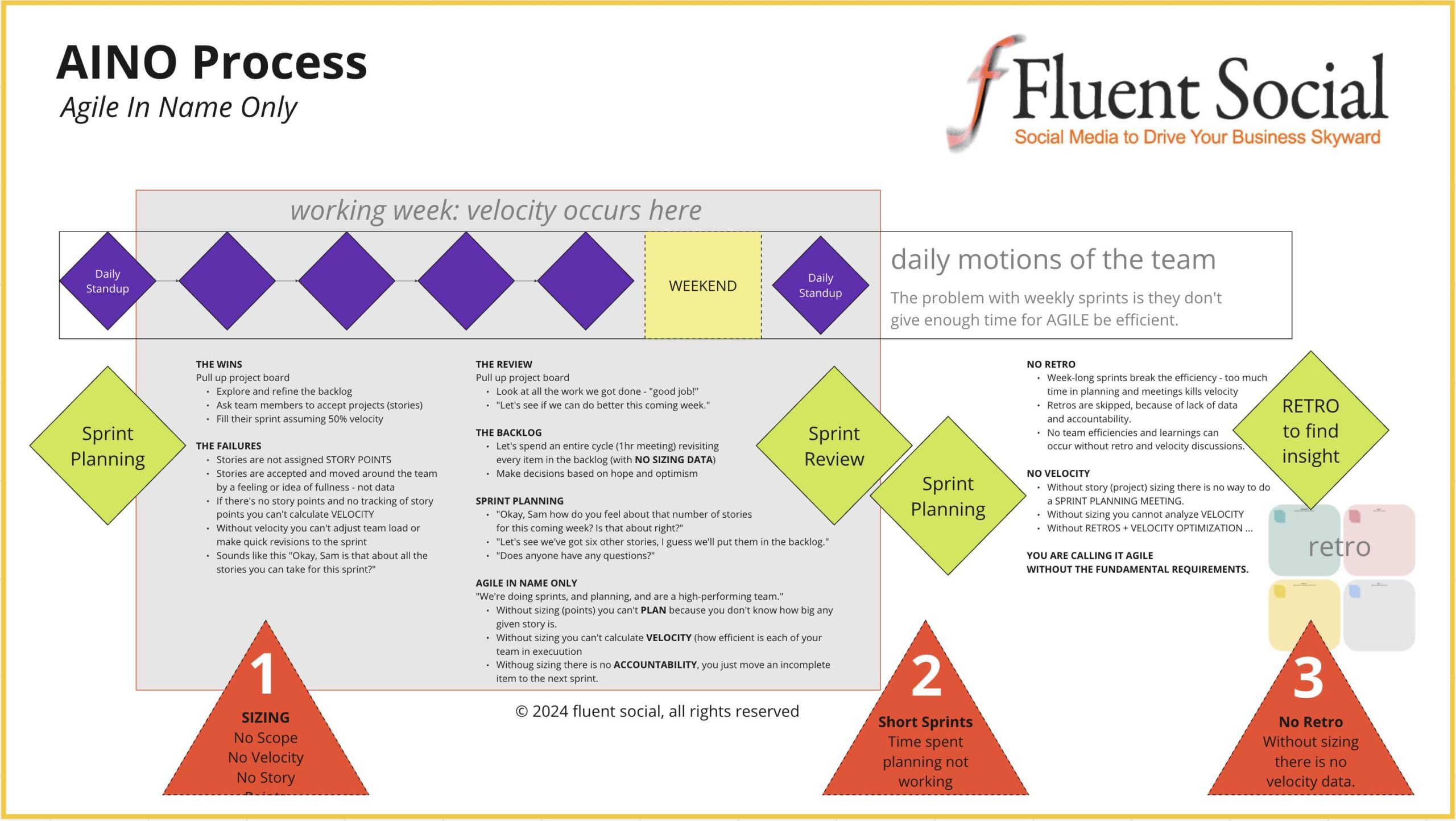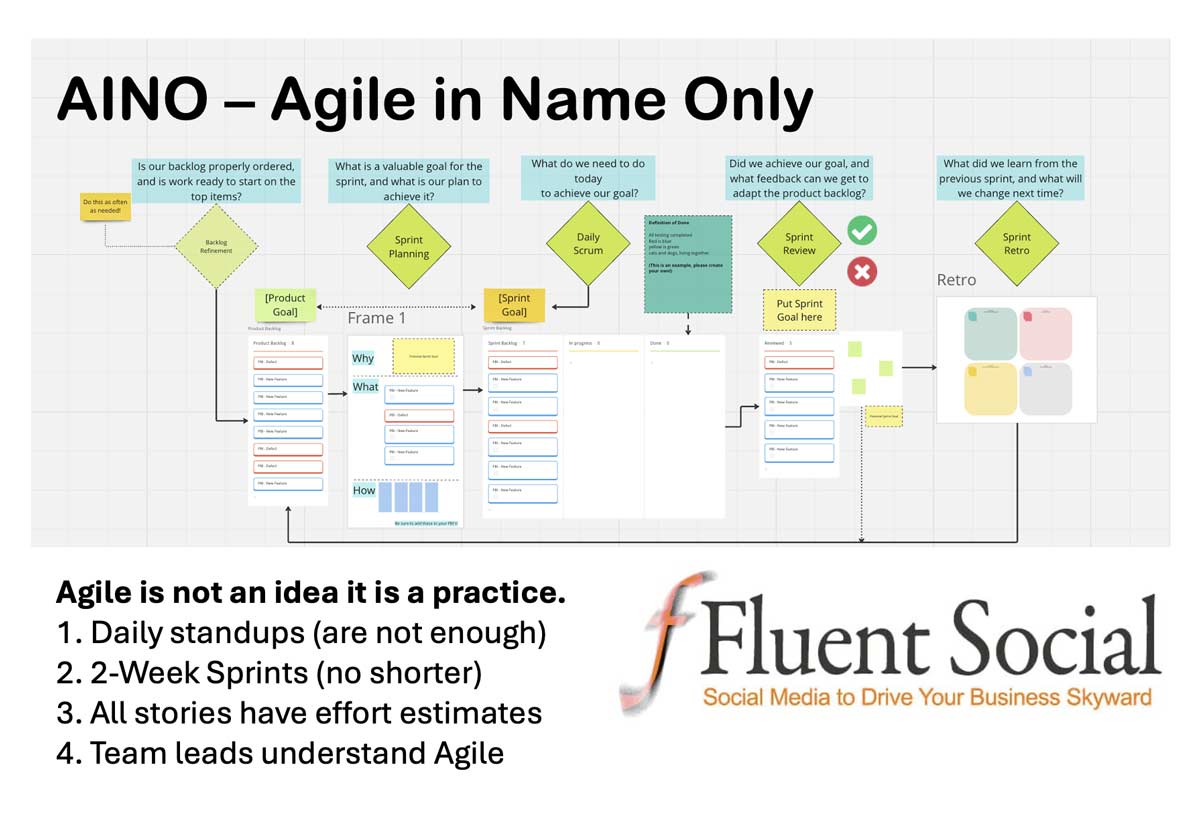When you’ve been part of digital marketing teams for a long time you see some dumb stuff. Large companies with middle managers who think they are experts on everything. I’ve worked with some experts, and ma’am, you are not an expert.
“We’re an agile team.”
In this epic failure, a team tries an “agile framework” with many of the critical pieces missing. Agile is a well-mapped discipline that can guide a high-performing team. But, agile is a discipline. It requires experience, leadership, and authority. A newly minted “scrum master” from a Coursera or LinkedIn Learning certificate, has very little chance of guiding an agile team successfully. In this example, we see three massive failures of an inexperienced scrum master and their manager’s bravado.
The first failure is ONE-WEEK SPRINTS. This gives no time for velocity adjustments. Team members have multiple “agile” meetings across the week which kills their velocity/agility.
The second failure (more egregious) is the lack of project scope or sizing. With no story points it is impossible to do a sprint plan based on data. Sprint planning without points or sizing is called simple project planning, not Agile.
The final failure (resulting from the first two failures) is the lack of any RETROSPECTIVE. It is during the RETRO that scrum masters and leadership get to refine the process, optimize the team, and identify weaknesses in workflows or team abilities.
I give you a roadmap for AINO.
(Do not follow this map. The link below shows a healthy Agile map.)

If you are interested in looking deeper into this issue, here is a free ungated link to this Miro board where you can explore this map as it relates to a REAL AGILE PLAN.
MIRO: AGILE vs. AINO
As digital marketing consultants for some of the largest brands in tech, we’re invested in not letting this failure happen on your site or within your team.
Here is a document from Harvard Business Review on the importance of planning in Agile.

John McElhenney
